#openacessjournals
Text
Qualitative Approach to Understanding Barriers to Delivering Difficult News in Sub Saharan Africa- Juniper Publishers

Dear Editor,
Communication, especially delivery of difficult news (DDN), remains a key part of clinical practice. Despite its importance, many medical providers lack the skill and ability to effectively DDN to their patients. Due to lack of data specific to sub-Saharan Africa and to help us develop an appropriate training tool for this geographical area, we sought to explore what challenges and barriers residents at our institution faced when they deliver difficult news to their patients.
Methodology
A qualitative approach using thematic analysis was adopted and a self-administered open ended survey was administered amongst residents currently doing their Masters in Medicine at the Aga Khan University Hospital in Nairobi and Dar es Salaam. The survey was emailed to all the residents within the two campuses using the REDCap software. Two independent researchers identified recurring themes and categorized barriers into either: physician, cultural or institutional. All residents provided written informed consent prior to participation in this study.
Results
A total of 105 residents participated in the survey (response rate 70%). The most frequent physician barriers identified were lack of training opportunities and time to DDN. More than fifty percent of the residents stated that cultural diversity, gender role-play and discussing dying as a taboo subject were the most common cultural barriers. Approximately 4 out of 10 residents faced institutional barriers such as lack of time due to busy schedules especially when on call, lack of private spaces to hold these conversations and limited mentorship/guidance by the faculty when having difficult conversations with patients.
Discussion
Physician barriers: Only 42.1% of the residents in our study had received any formal training in DDN. A study conducted in Nigeria looking at breaking bad news among nurses and physicians showed that only 21% of the respondents had formal training to do so [1]. Similarly, minimal formal training in conducting complex discussions were reported by health care providers in a Tanzanian health care facility [2]. In addition, our resident expressed lack of mentorship and support from faculty members in delivering difficult news to their patients.
Cultural barriers: Our residents felt that the diversity of cultures at our institutions greatly influenced the DDN to their patients, especially if different than their own. Similarly, Periyakoil and colleagues also found that many physicians struggle with end of life conversations especially in patients with a different ethnicity than their own [3]. Female residents at our institution were not taken seriously and struggled with delivery of difficult news compared to their male counterparts. Residents expressed that a majority of patients preferred a male relative be present during DDN. In addition, extended family members, rather than the female spouse, were involved in the decision making process. Our residents also expressed that talking about dying was often seen as taboo for many patients and their families. Further studies are needed to better understand how specific cultures affects effective communication especially in sub-Saharan Africa.
Institutional barriers: Similar to other studies, our residents reported a lack of adequate space and privacy when DDN to patients [2]. Opportunities supported by the institution to train and enhance communication skills were scarce. Similar to other studies, time constraint due to other clinical duties was also reported as a significant barrier [4].
Conclusion
Our study helps shed light on the barriers and challenges our residents face within our institution in delivering difficult news to their patients. This study will help us design and implement effective strategies, unique to sub-Saharan Africa, to better train our resident in DDN to their patients.
To read more articles in
Journal of Surgery
Please Click on:
https://juniperpublishers.com/oajs/index.php
For More
Open Access Journals
in
Juniper Publishers
Click on:
https://juniperpublishers.com/journals.php
#plastic surgery#surgery journals#JuniperPublishers#openacessjournals#Cardiac Surgery Orthopedic Surgery
0 notes
Text
Patient Satisfaction from Nursing Care in Private Tertiary Care Hospital Peshawar by Muslim Shah in LOJNHC- Lupinepublishers

Cross-sectional study was conducted in private tertiary care hospital. A well-structured questionnaire was adopted and translated from English into Urdu that covered multiple domains to assess patient satisfaction. Data was collected through convenience sampling technique. Data analysis was done by SPSS version 22.Total participants were 52 in which 59.6% subjects were highly satisfied, 32.6% were partially satisfied and 7.7% were dissatisfied from nursing care. Age, gender, education and hospital stay have no effect on patient satisfaction. Applied Chi-square test that was not significant.Satisfaction level of patient from nursing care was high while few participants were dissatisfied. Type of ward, education, hospital stay and gender were not determined to affect satisfaction level. Moreover Routine greeting, caring time, giving information regarding disease, keeping privacy, medication timing and taking vital signs were appreciated. Few participants were not satisfied with information regarding action, side effect of medication and relaxation therapy.
https://www.lupinepublishers.com/nursing-journal/fulltext/LOJNHC.MS.ID.000110.php
1 note
·
View note
Text
Crimson Publishers- Experimental Techniques in Urology & Nephrology
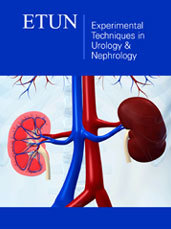
Broaden Views of the Impact of Lower Urinary Tract Symptoms on Healthcare by Ming-Ping Wu in Experimental Techniques in Urology & Nephrology
Lower urinary tract symptoms (LUTS), which encompass storage, voiding, and postmicturition symptoms, are highly prevalent and recognized globally. Wu et. al [1] investigated the healthcare-seeking prevalence of those with lower LUTS based a nation-wide insurance data base in Taiwan. LUTS were associated with a low healthcare-seeking prevalence due to shame, embarrassment, social pressure, ora lack of knowledge of the problem. According to Wu et al. [1] the prevalence of healthcareseeking was only 2.31% in 2000, with an increase to 3.24% in2005, and 3.84% in 2009 [1]. There a rapid increase in LUTS healthcare-seeking prevalence may be due to both an increase in LUTS population, and the increase in the percentage of those with LUTS seeking medical assistance. However, the prevalence is still much lower than that in the real situation, e.g. 64.3% of the adult population had more than one LUTS by EPIC study in 2006 [2]. The low prevalence of healthcare-seeking may underestimate the impact of LUTS on health. Even though, the financial burden on the healthcare system is substantial. LUTS become more severe with age. Therefore, as the world population is aging, LUTS are becoming a substantial health-care burden as the number of aged people who want to maintain a good quality of life increases.
0 notes
Link
Like Us On Facebook: https://www.facebook.com/IoreInternational/
0 notes
Text
The Clinical Outcomes Regarding to Tumor-Infıltrating Lymphocytes in the Breast Cancer Patients Treated with Neoadjuvant Chemotherapy- Juniper Publishers
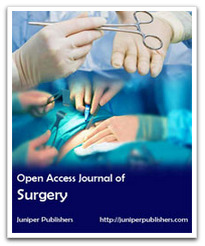
In breast cancer great endeavors are going on to find new markers in determining the prognosis. In addition to well-known prognostic factors such as tumour size, grade, nodal status, molecular subtype, proliferation index, gene-expression based recurrence score, recently there is increasing evidence that tumor-infiltrating lymphocytes (TILs) are of important role as an immune biomarker in breast carcinoma [1-3]. TILs might be a reflection of host immune response which plays an important role in cancer control and patient’s clinical outcome. TILs are mononuclear immune cells that infiltrate tumour tissue and mainly comprised of cytotoxic (CD8+) T cells as well as macrophages, helper (CD4+) T cells, B cells, and NK cells [4,5]. There are two types of TILs: Stromal TILs (sTILs) are defined as the percentage of tumour stromal field in which lymphocytes are located without direct connection to tumour cells. In contrast, intratumoural TILs reflect immune cells within the tumour cells. Stromal TILs are commonly detected in H&E stained sections by light microscopy, and consist the majority of TILs in breast cancer [1]. Its assessment is the most reproducible parameter by pathologists. Moreover, lymphocytes-predominant breast cancer (LPBC) is defined as those cancer with TILs occupies at least 50 % to 60 % of the stroma [4].
The clinical importance and amount of TILs appear to vary significantly among different subtypes of breast cancer [2,6]. TILs are more common in triple-negative breast cancer (TNBC) and HER2-overexpressing breast cancer, with LPBC frequency of 15-25 % in these groups. Contrary, luminal tumour is the least immune infiltrated breast cancer subtype [3,6,7]. Large series suggest that tumour with higher TILs levels are associated with improvement of prognosis by longer survival rates and with reduction of locoregional recurrences [8,9]. This positive prognostic effect is especially striking on TNBC and HER2 positive patient populations [6,10]. In addition to prognostic value of TILs, trials also indicate the predictive role of TILs in response to neoadjuvant chemotherapy [11,12]. The aim of this study was to determine the association between TILs level and other clinicopathological parameters and to explore the prognostic and predictive roles of TILs in our breast cancer patients treated with neoadjuvant therapy.
Materials and Methods
The study was conducted to determine the association of TILs value with the clinical outcomes at neoadjuvant settings. Breast cancer patients treated after neoadjuvant chemotherapy at Bakırköy Sadi Konuk Training and Research Hospital from July 2011 to January 2016 were included in this study. All were followed up in our hospital. Patient’s demographic information, characteristics, outcomes and follow-up were obtained from hospital records. The study protocol was approved by the ethics committee of our institute (No:2017/09-20). Neoadjuvant therapy were taxane and anthracycline-based protocol, adding transtuzumab in the HER2 positive subtypes. Surgical treatment was decided as to treatment response. Radiotherapy and endocrine therapy were given in accordance with institutinal guidelines. Inoperable patients following neoadjuvant therapy were excluded of this study. The patients were categorized according to molecular subtypes as triple negative (TN), HER2 positive and luminal type. All patients in each subtypes were distributed into two groups according to TILs, with 10 % of cut-off value. In order to determine TILs value all patients’ paraffin sections stained hematoxilyn and eosin (H&E) from core biopsies were retrospectively assessed by an experienced pathologist (S.A.), blinded of clinical information. Briefly, all mononuclear cells (including lymphocytes and plasma cells) in the stromal compartment within the borders of invasive tumour were evaluated and reported as a percentage value. pCR was defined as ypT0/Tis ypN0.
We analysed associations of TILs with other clinicopathological factors such as menopausal status, tumour molecular type, ypTNM classification, histology, grade, lymphovascular and perineural invasion. In order to evaluate the predictive role of TILs, we investigated pathological responses to neoadjuvant therapy in high and low TILs groups of each subpopulation. To determine the prognostic role of TILs we recorded the patients’ locoregional recurrence and systemic metastasis in all groups and detected overall survival and disease free survivals. Statistical analysis was carried out using NCSS 11 package program. For categorical variables the frequency and percentage values were calculated and for continuous variables, average and standard derivation values were calculated. Standard distribution sort of variables was made with Kolmogorov-Smirnov test. Student t test was used in the comparison of two groups and single direction variance analysis was used in the comparison of more than two groups for variables exhibiting standard distribution. Disease-free survival (DFS) and overall survival (OS) were obtained using Kaplan-Meier survival analysis. The relations between categorical variables were examined with Chi square test, Fisher exact probability test and Fisher-Freeman-Halton test. P<0,05 was accepted as statistically significant.
Results
The study consisted of 89 breast cancer patients who underwent neoadjuvant chemotherapy. The mean follow-up duration of all patients was 33,8 (15-84) months. According to molecular subtypes, 39 patients had luminal tumour, and 25 patients each triple negative and HER2 positive.
TILs values in all groups and its relation with other clinicopathological factors
The mean TILs values were 10.8%, 15.4%, 6% in TN, HER2 positive and luminal groups, respectively. Among the patients of high TILs levels, HER 2 positive group was the most frequent molecular subtype (50 %), followed by triple negatives (32%) (Table 1). Sixty percent of patients with TILs less than 10 % had luminal tumour. There was statistically significant relationship between TILs value and both molecular type of tumour (p=0.0001) and presence of lymphovascular invasion (p=0.048). No association was detected between TILs and other variables such as menopausal status, ypTNM classification, histology, grade, and perineural invasion (Table 2).
TILs and prognosis
No association was seen in any subtypes between TILs levels and presence of either locoregional recurrence or systemic metastasis (Table 3). Neither OS nor DFS were significantly different between high and low TILs groups in both TN and HER2 positive groups. Because there was no death in luminal group, we could not detected survival analyses in this subtype.
Predictive role of TILs
In the neoadjuvant setting, no interaction was found between TILs level and complete pathological response according to each subtypes (Table 4). But, there was non-significantly better pathological response rates in high TILs group of HER2 (+) population.
Discussion
The constant interaction between tumour and host immunity influences patient’s outcome. Innate and adaptive immune response in the tumour milieu require functional cytotoxic T-cells in order to achieve efficent tumour elimination [1]. The impact of TILs on the prognosis and treatment prediction suggests its importance on the reflection of individual immunity [13]. Various studies of TN and HER2 (+) breast cancer have pointed consistent results that the increased TILs value the patients have, the better OS and DFS in the adjuvant setting [6,14]. Moreover, the highest TILs also show the highest expression of T-cell checkpoint receptors which found on T cells [1]. Antitumour immunity is enhanced by monoclonal antibodies against checkpoint inhibitors. In addition to standard therapeutic options, immunotherapy in breast cancer is a new and promising implication especially in selected patient population. Therefore, TILs evaluation may be accepted as a biomarker for immunotherapeutics in patients with breast cancer at near future.
In the light of these rapidly evolving field, in 2014 international TILs working group has recommended TILs evaluation as a immune parameter along with standard histopathological practise to facilitate its use in research setting and clinical trials [4]. They reported TILs measurement as a percentage of stromal TILs on a continuous scale by visual assessment of H&E-stained sections of primary tumour specimens similar to any other quantitative histological biomarker. Several studies have evaluated lymphocyte subtypes by using immunohistochemical analysis, yet added value of immunohistochemistry on to TILs evaluation remains to be demonstrated [4,15]. Moreover, digital image analysis of TILs can provide more exact measurement and eliminate inter-pathologists differences in TILs assessment [13]. Visual measurement of TILs is prefered at many trials like our study [4,6]. Because this route is stated as rapid, easly available, less expensive and adequate tool in TILs assessment. There is no established threshold for high TILs. Various studies used different cut-off values [7,9,16,17]. Moreover, 50-60 % of TILs value for lymphocytes-predominant breast cancer had been arbitrarly chosen [17]. In this study, ROC Curve was applied for the estimation of pathological response of TILs values, but a significant breakpoint could not be found (unreported data). Therefore, we accepted 10 % of TILs level as a cut-off value similar to many studies [6,18].
In our study, we investigated the relation of TILs value with other clinicopathological parameters and its impact on patients with all molecular subtypes of breast carcinoma who were operable following neoadjuvant treatment. The positive relation of higher quantities of TILs and both negative steroid receptor status and presence of HER2 positivity is striking in the literature like in our study [6]. Also LPBC is commonly found in HER2 positive and triple negative subtypes [4,19]. Similarly, in our study HER2 positive group was the main molecular subtype (50%) that harbours the high percentage of TILs. But, interestingly unique patient with LPBC was seen in our series. In this study, patients with luminal type breast cancer had lower TILs value, with the median of 6%. Similar to litreture, no significant prognostic role of TILs was found in patients of our luminal group [1]. According to the trial by Huszno [7] higher grades of TILs were present more frequently in younger patients than older women (47% vs. 24%). Moreover, higher TILs levels was appeared to be associated with higher histological grades. On the other hand, TILs value also was significantly correlated with lymphovascular invasion in our study.
The positive association between TILs levels and favourable clinical outcomes was based on Sistrunk’s cohort trial at 1922 [20]. Eastern Cooperative Oncology Group’s phase III trials showed that each 10 % increase in TILs levels significantly predicted better DFS and OS in TNBC with a median follow-up of over 10 years [21]. A recent meta-analysis of twenty-five trials including more than twenty thousands patients confirmed the survival benefit of TILs in TN and HER2 positive breast cancer patients [18]. Moreover, according to secondary analysis of the NeoALTTO trial reported by Salgado [17] patients with high TILs levels at baseline had better outcomes for event free survival independent of whether they achieved pCR in the neoadjuvant phase. The association between higher levels of TILs and decreased distant recurrence rates in TN breast cancer was found in FinHER trial [22].
Contrary to obvious results as to prognostic impact of higher TILs levels on the adjuvant and neoadjuvant settings, we could not detected any significant relationship between TILs and survival analysis. Another issue related to TILs is its utility in prediction of adjuvant and neoadjuvant therapy response [6]. At the adjuvant setting, the association between higher levels of TILs and increased transtuzumab benefit in HER2 (+) subtype was detected in phase III trial including 1010 early stage BC patients [22]. Positive correlation between TILs levels and pCR rates was prominent in HER2 (+) tumours. According to the study of Carbognin [12] pCR rates were increased by nearly 30 % in the presence of TILs reported as LPBC. Another trial has also indicated that the level of TILs greater than 5% was associated with higher pCR rates [17]. Although we could not detected significant correlation between TILs value and pCR in our study, there were non-significantly higher pCR rates in HER2 (+) group. The minority of our patient population explains the limited power of the statistical analysis.
Conclusion
Host immunity controls cancer and influences patient’s outcome. How can a host enhance anti-tumor immune response and which biomarker provides better treatment approach are the main questions. Although which level of TILs should be used to determine optimal treatment strategy for breast cancer patients has not been certain yet, many trials indicate that TILs is of prognostic effect in long-term disease control and predictive effect of a better local response to treatment. But, further resaerchs are warrented before the utility of TILs as an immune biomarker for routine clinical practise of breast cancer patients.
To read more articles in
Journal of Surgery
Please Click on:
https://juniperpublishers.com/oajs/index.php
For More
Open Access Journals
in
Juniper Publishers
Click on:
https://juniperpublishers.com/journals.php
#plastic surgery#surgery journals#JuniperPublishers#openacessjournals#Cardiac Surgery Orthopedic Surgery
0 notes
Text
A Rare Cause of Gastrointestinal Bleeding: A Jejunal Dieulafoy’s Lesion- Juniper Publishers
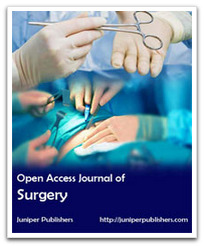
One in a thousand people have an acute gastrointestinal (GI) hemorrhage per year [1]. There are around 300,000 hospitalizations for GI bleeds, costing an estimated $2 billion per year [2-4]. Compared to lower gastrointestinal bleeding (LGIB), upper gastrointestinal bleeding (UGIB) is associated with a much higher mortality rate, with some studies suggesting a 30-day mortality rate of up to 14% [2,3]. A majority of these UGIB (67 - 80%) are attributed to gastric erosions/ulcers 6,17,18. However, of this morbid group of bleeds, a rare (1% or less), yet more serious cause is a Dieulafoy’s lesion (DFL). DFL, is an obscure type of bleeding that can cause life threatening hemorrhages with a mortality rate ranging from 28-67% [5,6].
DFL was first described by MT Gallard [7] in 1884 as a type of aneurysm and later clarified by P. G. Dieulafoy in 1898 who believed this was an early stage of ulceration [7-9]. DFL’s are a collection of large tortuous arterioles of the gastrointestinal vessels. These are often compared to aneurysms, however, DFL’s are caused by genetic malformations rather than degeneration. While the exact mechanism of rupture and subsequent hemorrhage is still poorly understood, several studies have suggested mucosal erosion and ischemic injury, related to aging and/or cardiovascular disease, as possible causes [10]. DFLs are predominantly seen in elderly patients (mean age 69.7 years) though they can be seen in younger patients as well. A vast majority of patients also will have underlying comorbidities such as renal failure, diabetes, or coronary artery disease. Additionally, there have been a few isolated cases associated with chronic immunosuppression whether from underlying malignancies or medication induced [11].
More than 70% of these rare lesions are found in the stomach, usually near the lesser curvature. The discovery of extragastric DFL’s are infrequent, with the duodenum (14%) and colon (5%) being the most common locations [12-14]. The most unusual site is the jejunum, which accounts for 1% of all DFL’s [12-14]. Historically, there have been a few case reports worldwide of jejunal DFL’s, however, of these reported cases, the lesions were found by advanced imaging (CT angiogram or Bleeding scan). We present a case of a jejunal DFL that was unable to be found by advanced imaging but was diagnosed on push enteroscopy.
Assessment
The patient was a 79-year-old African American female with a known history of end stage renal disease and large granular lymphocytic leukemia. Over the course of 8 months, the patient had 3 admissions for gastrointestinal bleeds. She received a total of 16 units of blood with 4 EGDs, 2 colonoscopies, 1 bleeding scan and 1 CT angiogram. Of the listed procedures performed, all were negative for active bleeding and there was no solid evidence of a bleeding source. She was presumed to have bled twice from erosive gastritis and the most recent admission was from an unknown etiology. An outpatient small bowel capsule study was done after these admissions showing no findings.
She subsequently presented to the ER 24 days after her most recent admission for melena and orthostasis, where she was found to have a hemoglobin of 4.4 g/dL (previous hemoglobin was 10.2 g/dL). EGD and colonoscopy did not show any findings or source of bleeding. The patient continued to have melena and required 8 units of blood. A CT angiogram and bleeding scan were again inconclusive. A push enteroscopy was performed on day 6 of admission, showing an actively oozing area in the jejunum with no surrounding ulceration or malformations (Figure 1). Bipolar cauterization and 2 hemoclips were placed ceasing the actively bleeding Dieulafoy’s lesion. The patient’s hemoglobin stabilized, and the melena resolved 1 day after the enteroscopy.
Management
Our patient had a history of large granulocytic lymphocytic leukemia (LGL) and end stage renal disease. Though the usual course of LGL presents with neutropenia and anemia, thrombocytopenia can be seen in up to 20% of cases [15]. Thrombocytopenia combined with immunosuppression from underlying malignancy and ESRD put this patient at an increased risk of developing hemorrhagic complications such as DFLs. On multiple admissions, our patient was found to pancytopenia, likely as a result of her bleeding and immunosuppression. To date, there have been a few case reports citing immunosuppression, immunotherapy, and thrombocytopenia all being associated with GI bleeds due to a DFL [16,17]. While the mechanism is not yet established, it is thought to be related to impaired tissue remodeling and repair.
The current endoscopic modalities to manage a DFL include mechanical treatment (with endoclips or band ligators), injection therapy (with diluted epinephrine), thermal coagulation therapy, or in some cases, a combination of different modalities. Two controlled trials suggested that mechanical hemostasis with endoclips can control acute bleeding and may reduce recurrent bleeds compared to injection therapy alone [18]. There have been no studies comparing the efficacy of thermal coagulation alone or in combination with other methods. A second trial comparing endoclips to injection therapy with epinephrine showed equal rates of initial hemostasis but significantly lower rates of rebreeding in the endoclip arm (0%) vs epinephrine arm (35%) [19].
Post endoscopic management depends on whether the patient is at high risk or low risk for rebleeding. One method used to calculate risk of recurrence is the Glasgow - Blatchford bleeding score (GBS score). A GBS score of 0-1 is considered low risk for rebleeding, and in this case the patient may be discharged from inpatient care with plans for outpatient endoscopic intervention. Inpatient treatment is recommended for patients with GBS scores of 2 or greater [20]. The rate of recurrence of bleed for a Dieulafoy’s lesion ranges from 9-40% [21]. There is a higher rate of recurrence with endoscopic monotherapy compared to combined endoscopic interventions [22]. The rate of rebleeding is not associated with gender or location of DFL or past medical history [23]. Inpatient treatment recommendation is to treat with IV pantoprazole for 72 hours in order to keep gastric pH above 6 in order to maintain intact coagulation process, followed by oral pantoprazole therapy. While mortality is lowest in patients with no significant medical history or comorbidities, overall longterm prognosis of a DFL is favorable once primary hemostasis is achieved [24]. Following push enteroscopy our patient did well without any further complications or signs of rebleeding [25-30].
Conflict of Interest
All authors have read and approved the submission of this manuscript. The manuscript has not been published and is not being considered for publication elsewhere, in whole or in part. The authors declare that there is no conflict of interests regarding the publication of this paper
To read more articles in
Journal of Surgery
Please Click on:
https://juniperpublishers.com/oajs/index.php
For More
Open Access Journals
in
Juniper Publishers
Click on: https://juniperpublishers.com/journals.php
#surgery journals#plastic surgery#JuniperPublishers#openacessjournals#Cardiac Surgery Orthopedic Surgery
0 notes
Text
A Rare Cause of Gastrointestinal Bleeding: A Jejunal Dieulafoy’s Lesion- Juniper Publishers
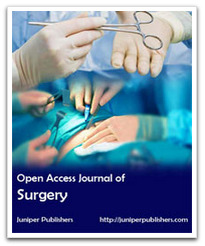
One in a thousand people have an acute gastrointestinal (GI) hemorrhage per year [1]. There are around 300,000 hospitalizations for GI bleeds, costing an estimated $2 billion per year [2-4]. Compared to lower gastrointestinal bleeding (LGIB), upper gastrointestinal bleeding (UGIB) is associated with a much higher mortality rate, with some studies suggesting a 30-day mortality rate of up to 14% [2,3]. A majority of these UGIB (67 - 80%) are attributed to gastric erosions/ulcers 6,17,18. However, of this morbid group of bleeds, a rare (1% or less), yet more serious cause is a Dieulafoy’s lesion (DFL). DFL, is an obscure type of bleeding that can cause life threatening hemorrhages with a mortality rate ranging from 28-67% [5,6].
DFL was first described by MT Gallard [7] in 1884 as a type of aneurysm and later clarified by P. G. Dieulafoy in 1898 who believed this was an early stage of ulceration [7-9]. DFL’s are a collection of large tortuous arterioles of the gastrointestinal vessels. These are often compared to aneurysms, however, DFL’s are caused by genetic malformations rather than degeneration. While the exact mechanism of rupture and subsequent hemorrhage is still poorly understood, several studies have suggested mucosal erosion and ischemic injury, related to aging and/or cardiovascular disease, as possible causes [10]. DFLs are predominantly seen in elderly patients (mean age 69.7 years) though they can be seen in younger patients as well. A vast majority of patients also will have underlying comorbidities such as renal failure, diabetes, or coronary artery disease. Additionally, there have been a few isolated cases associated with chronic immunosuppression whether from underlying malignancies or medication induced [11].
More than 70% of these rare lesions are found in the stomach, usually near the lesser curvature. The discovery of extragastric DFL’s are infrequent, with the duodenum (14%) and colon (5%) being the most common locations [12-14]. The most unusual site is the jejunum, which accounts for 1% of all DFL’s [12-14]. Historically, there have been a few case reports worldwide of jejunal DFL’s, however, of these reported cases, the lesions were found by advanced imaging (CT angiogram or Bleeding scan). We present a case of a jejunal DFL that was unable to be found by advanced imaging but was diagnosed on push enteroscopy.
Assessment
The patient was a 79-year-old African American female with a known history of end stage renal disease and large granular lymphocytic leukemia. Over the course of 8 months, the patient had 3 admissions for gastrointestinal bleeds. She received a total of 16 units of blood with 4 EGDs, 2 colonoscopies, 1 bleeding scan and 1 CT angiogram. Of the listed procedures performed, all were negative for active bleeding and there was no solid evidence of a bleeding source. She was presumed to have bled twice from erosive gastritis and the most recent admission was from an unknown etiology. An outpatient small bowel capsule study was done after these admissions showing no findings.
She subsequently presented to the ER 24 days after her most recent admission for melena and orthostasis, where she was found to have a hemoglobin of 4.4 g/dL (previous hemoglobin was 10.2 g/dL). EGD and colonoscopy did not show any findings or source of bleeding. The patient continued to have melena and required 8 units of blood. A CT angiogram and bleeding scan were again inconclusive. A push enteroscopy was performed on day 6 of admission, showing an actively oozing area in the jejunum with no surrounding ulceration or malformations (Figure 1). Bipolar cauterization and 2 hemoclips were placed ceasing the actively bleeding Dieulafoy’s lesion. The patient’s hemoglobin stabilized, and the melena resolved 1 day after the enteroscopy.
Management
Our patient had a history of large granulocytic lymphocytic leukemia (LGL) and end stage renal disease. Though the usual course of LGL presents with neutropenia and anemia, thrombocytopenia can be seen in up to 20% of cases [15]. Thrombocytopenia combined with immunosuppression from underlying malignancy and ESRD put this patient at an increased risk of developing hemorrhagic complications such as DFLs. On multiple admissions, our patient was found to pancytopenia, likely as a result of her bleeding and immunosuppression. To date, there have been a few case reports citing immunosuppression, immunotherapy, and thrombocytopenia all being associated with GI bleeds due to a DFL [16,17]. While the mechanism is not yet established, it is thought to be related to impaired tissue remodeling and repair.
The current endoscopic modalities to manage a DFL include mechanical treatment (with endoclips or band ligators), injection therapy (with diluted epinephrine), thermal coagulation therapy, or in some cases, a combination of different modalities. Two controlled trials suggested that mechanical hemostasis with endoclips can control acute bleeding and may reduce recurrent bleeds compared to injection therapy alone [18]. There have been no studies comparing the efficacy of thermal coagulation alone or in combination with other methods. A second trial comparing endoclips to injection therapy with epinephrine showed equal rates of initial hemostasis but significantly lower rates of rebreeding in the endoclip arm (0%) vs epinephrine arm (35%) [19].
Post endoscopic management depends on whether the patient is at high risk or low risk for rebleeding. One method used to calculate risk of recurrence is the Glasgow - Blatchford bleeding score (GBS score). A GBS score of 0-1 is considered low risk for rebleeding, and in this case the patient may be discharged from inpatient care with plans for outpatient endoscopic intervention. Inpatient treatment is recommended for patients with GBS scores of 2 or greater [20]. The rate of recurrence of bleed for a Dieulafoy’s lesion ranges from 9-40% [21]. There is a higher rate of recurrence with endoscopic monotherapy compared to combined endoscopic interventions [22]. The rate of rebleeding is not associated with gender or location of DFL or past medical history [23]. Inpatient treatment recommendation is to treat with IV pantoprazole for 72 hours in order to keep gastric pH above 6 in order to maintain intact coagulation process, followed by oral pantoprazole therapy. While mortality is lowest in patients with no significant medical history or comorbidities, overall longterm prognosis of a DFL is favorable once primary hemostasis is achieved [24]. Following push enteroscopy our patient did well without any further complications or signs of rebleeding [25-30].
Conflict of Interest
All authors have read and approved the submission of this manuscript. The manuscript has not been published and is not being considered for publication elsewhere, in whole or in part. The authors declare that there is no conflict of interests regarding the publication of this paper
To read more articles in
Journal of Surgery
Please Click on:
https://juniperpublishers.com/oajs/index.php
For More
Open Access Journals
in
Juniper Publishers
Click on: https://juniperpublishers.com/journals.php
0 notes
Text
Identification of Factors Affecting Mother-Infant Bonding in Advanced Maternal Age by Oznur Korukcu in LOJNHC - Lupinepublishers

The present study was conducted at Akdeniz University Hospital and Antalya Training and Research Hospital between September 1st and December 31st, 2015. Statistics that describe the introductory information were provided along with the values of frequency, percentage, mean and standard deviation. Independent variables were categorical, logistic regression model was employed to identify the factors affecting the mother-infant bonding. Mother's educational attainment, employment status, occupation, spouse's age, educational attainment, occupation, and family’s income do not have any effect on the mother-infant bonding.
https://www.lupinepublishers.com/lojnhc/fulltext/LOJNHC.MS.ID.000102.php
#mother#infant#mother and infant#child#lupinepublishers#nursing child#openacessjournals#family#factors
1 note
·
View note
Text
Juniper Publishers | Publons

Juniper publishers have been established with the aim of spreading quality scientific information to the research community throughout the universe. We, as Open Access publishers, strive to offer the best in class online science publications. Open Access process eliminates the barriers associated with the older publication models, thus matching up with the rapidity of the twenty-first century. Our main areas of interest lie in the fields of science, engineering and other related areas. Juniper Publishers is a platform for professors and researchers who aspire to give out quality information based on their research and expertise, in an attempt to aid scholars/researchers in their field of interest with the latest information.
To Read More about Juniper Publishers | Publons
Click on: https://publons.com/publisher/6250/juniper-publishers
To Know More about Juniper Publishers click on: https://juniperpublishers.com/
For More Open Access Journals in Juniper Publishers Click on: https://juniperpublishers.com/journals.php
0 notes
Text
Lupine Publishers-Journal of Clinical Gastroenterology and Hepatology
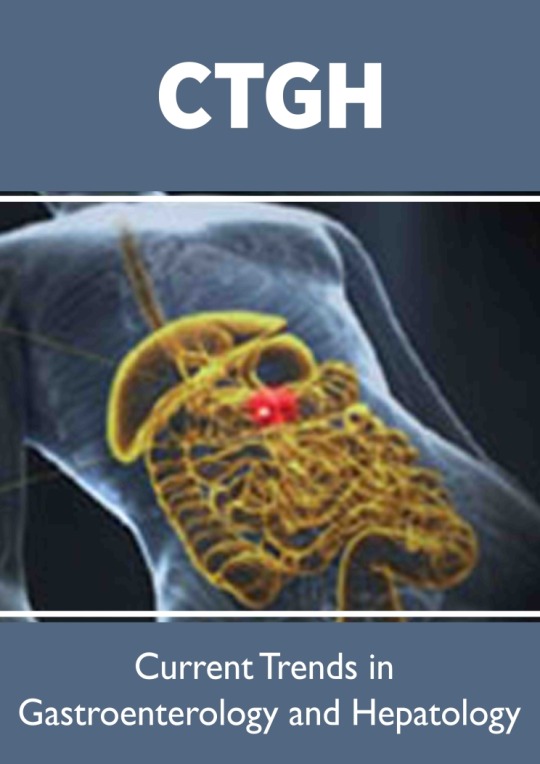
Bariatric Surgery and Pregnancy by Mohamed Nabih EL Gharib in #CTGH in #Lupinepublishers
Obesity represents a dangerous public health concern all over the universe. The World Health Organization suggests that, by 2015, approximately 2.3 billion adults will be overweight and more than 700 million will be obese [1]. Prevalence of obesity continues to rise and obesity has become the second leading cause of death in the West [2]. Obesity is associated with numerous comorbidities affecting virtually every organ system, including hypertension, type II diabetes mellitus, coronary artery disease, dyslipidemia, certain cancers, and ultimately increased mortality
https://lupinepublishers.com/gastroenterology-hepatology-journal/fulltext/bariatric-surgery-and-pregnancy.ID.000108.php
https://lupinepublishers.com/gastroenterology-hepatology-journal/pdf/CTGH.MS.ID.000108.pdf
https://lupinepublishers.com/gastroenterology-hepatology-journal/abstracts/bariatric-surgery-and-pregnancy.ID.000108.php
For more Lupine Publishers Open Access Journals Please visit our website:http://www.lupinepublishers.com/
For more Journal of Hepatology Research articles Please Click Here:https://lupinepublishers.com/gastroenterology-hepatology-journal/index.php
0 notes
Text
Urology open access Journals-Lupine Publishers

Clinico-Functional Characteristics of Left Ventricular Dysfunction in Patients with Glomerulopathies and Their Relationship to Morphological Changes in The Kidneys by Aiypova Dinara in #JUNS in #Lupinepublishers
Purpose: To study the possible association of cardiac function with morphological changes of the kidneys in glomerulopathies.Materials and Methods: 55 patients with GP were examined (32 men, 23 women) aged from 17 to 58 (on the average 32.76 ± 10.3) years. Given the high prevalence left ventricular systolic diastolic dysfunction in patients with GP with impaired renal function, analyzed the data of patients with CKD stages 1-3. The mean GFR was 87.92 ± 28.2 ml / min / 1.73 m2. Histology, immunofluorescence and electron microscopic method of investigation were used in the study of nephrobiopsy data.Results: Analysis of the frequency of morphological types of nephropathy in the examined patients made it possible to detect the prevalence of membranous glomerulonephritis (MG), which accounted for 43.6% of observations. IgA nephropathy was detected in 36.4% of cases. Focal-segmental glomerulosclerosis and minimal-change disease were much less common and in an equal proportion (7.3% of cases). Less often (in 5,4%) was marked by membrane-proliferative glomerulonephritis. Damage to glomerulus and endothelial proliferation significantly influenced the delay in the flow of early diastolic filling of the left ventricle deceleration and isovolumic relaxation time.The Conclusion: The causes of the development of diastolic dysfunction of the heart are the damage of glomerulus, endothelial proliferation, deposits of the complement fraction C3 in GP.
https://lupinepublishers.com/urology-nephrology-journal/fulltext/clinico-functional-characteristics-of-left-ventricular-dysfunction-in-patients-with-glomerulopathies-and-their-relationship.ID.000105.php
For more Lupine Publishers Open Access Journals Please visit our website:http://www.lupinepublishers.com/
For more Open Journal of Nephrology articles Please Click Here:https://lupinepublishers.com/urology-nephrology-journal/index.php
0 notes
Text
Utilization of Traditional Anticoagulation for Venous Thromboembolism in Patients with Liver Cirrhosis: Is It Safe? by Saad Qadwai in #lupinepublishers in #CTGH
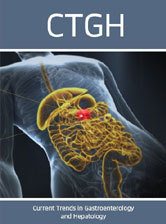
Patients with liver cirrhosis are known to have increased risk bleeding particularly from gastrointestinal tract. However, recent literature has shown that patients with liver cirrhosis are also at increased risk of developing deep venous thrombosis and pulmonary embolism. Therefore, it is important to consider prophylactic and therapeutic anticoagulation in cirrhotic patients. In this article, we have reviewed the available literature on the safety and efficacy of the utilization of prophylactic and therapeutic anticoagulation in cirrhotic patients.
https://lupinepublishers.com/gastroenterology-hepatology-journal/fulltext/utilization-of-traditional-anticoagulation-for-venous-thromboembolism-in-patients-with-liver-cirrhosis-is-it-safe.ID.000104.php
https://lupinepublishers.com/gastroenterology-hepatology-journal/pdf/CTGH.MS.ID.000104.pdf
https://lupinepublishers.com/gastroenterology-hepatology-journal/abstracts/utilization-of-traditional-anticoagulation-for-venous-thromboembolism-in-patients-with-liver-cirrhosis-is-it-safe.ID.000104.php
For more Lupine Publishers Open Access Journals Please visit our website:http://www.lupinepublishers.com/
For more gastroenterology journal articles Please Click Here:https://lupinepublishers.com/gastroenterology-hepatology-journal/index.php
0 notes
Text
Exploring the Regulation of Task Sharing for Access to Family Planning Services in Uganda by Moses Mulumba in LOJNHC - Lupinepublishers
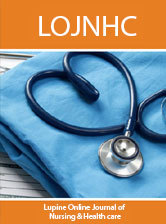
There is an acute shortage of Human Resources for Health in Uganda. While task sharing in the delivery of reproductive services is one of the strategies to avert this crisis, it takes place in an unregulated environment. The consequent lack of legal protection for health care providers poses a potential barrier to task sharing for both providers and the government. We show in this legal and policy review that the approach is not new in the country and that it has provisions in some policy documents. We further show the legal implications if it is rolled out in an unregulated environment and propose six options to guide regulation. These include enforcing the Health Service Commission Act, utilizing the mandate of the Director General to authorize treatment, amending the regulations of health professional regulatory bodies, developing regulation to support implementation of the acts for health professionals, developing a full act of parliament, and enacting ordinances at the district level.
https://www.lupinepublishers.com/nursing-journal/fulltext/LOJNHC.MS.ID.000112.php
#health services#enviroment#comission act#human resources#proffesion#treatment#nursing#healthcare cenres#openacessjournals#lupinepublishers
0 notes
Text
A Monte Carlo Simulation of Pitting Corrosion of Magnesium Alloys by Chia-Jung Chang in OAJBEB- Lupine publishers
In recent years, many studies on magnesium (Mg) alloys are focused on developing biodegradable medical implant. Interests are also placed upon the implant geometry related to corrosion processes. In this study, a simulation model to analyze pitting corrosion of Mg alloys is established with a Monte Carlo procedure. The Mg specimen is meshed with uniform hexahedral micro elements. Each element can be characterized by a corrosion probability (CP) for a time interval. The CP value is based on factors such as the number of surfaces exposed to the solution, properties of oxide layer, the porous structure and the Mg matrix. The results are compared with experimental measurement using a micro computed tomography (CT). The computational model appears to be useful for long-term simulation and analysis of corrosion behaviors and prediction for biodegradable implant development.
https://www.lupinepublishers.com/oajbeb/fulltext/OAJBEB.MS.ID.000103.php
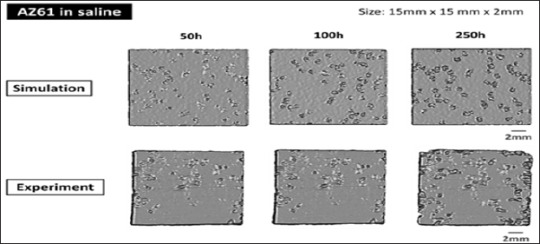
0 notes
Text
Intervening Practices for Cyberbullying Prevention by Gilberto Marzano in LOJNHC - Lupinepublishers

The Internet is a hugely vast, intriguing world, difficult to penetrate in depth, rich with dissimulations, full of useful but also evil things, that is continuously changing. Cyberbullying represents a palpable risk, especially for the online generation who is constantly connected and uses the internet to socialize. The first step for the prevention of cyberbullying is the acquisition of knowledge of what cyberbullying is and how it occurs within a specific context. This is no easy task, since cyberbullying is a complex and creeping new phenomenon, so much so that researcher’s opinions are often divided as to its definition, and there is a lack of agreement on many aspects concerning it. This article presents and comments on some cyberbullying preventing strategies and tips, and is devoted to educators engaged in cyberbullying prevention.
https://www.lupinepublishers.com/lojnhc/fulltext/LOJNHC.MS.ID.000108.php
0 notes
Text
Community-Based Participatory Research for Nutrition and Health Programs in the Caribbean: Using the Delphi Process to Create Sustainable Outcomes by Elizabeth D Wall-Bassett in LOJNHC - Lupinepublishers
https://www.lupinepublishers.com/lojnhc/fulltext/LOJNHC.MS.ID.000106.php

The Delphi Method was employed to identify key areas for intervention. The main themes were sponsorship and support, community ownership, commitment of community and committee members to health and nutrition programs. Concerns which exist, or were perceived to exist at the community, household, or individual level were identified. During the first phase a Steering Committee composed of government officials and stakeholders in the Commonwealth of Dominica gathered to discuss health concerns. There were three rounds. During the third round, an Advisory Committee with a representative Community Health Aide from each health district was established and charged with acting as the intermediary to facilitate programs based on the suggestions brought forth from the Delphi process.
https://www.lupinepublishers.com/lojnhc/fulltext/LOJNHC.MS.ID.000106.php
#community#health programms#Advisory commity#health and nutrition#health and fitness#openacessjournals#lupinepublishers#nursing#healthcare
0 notes